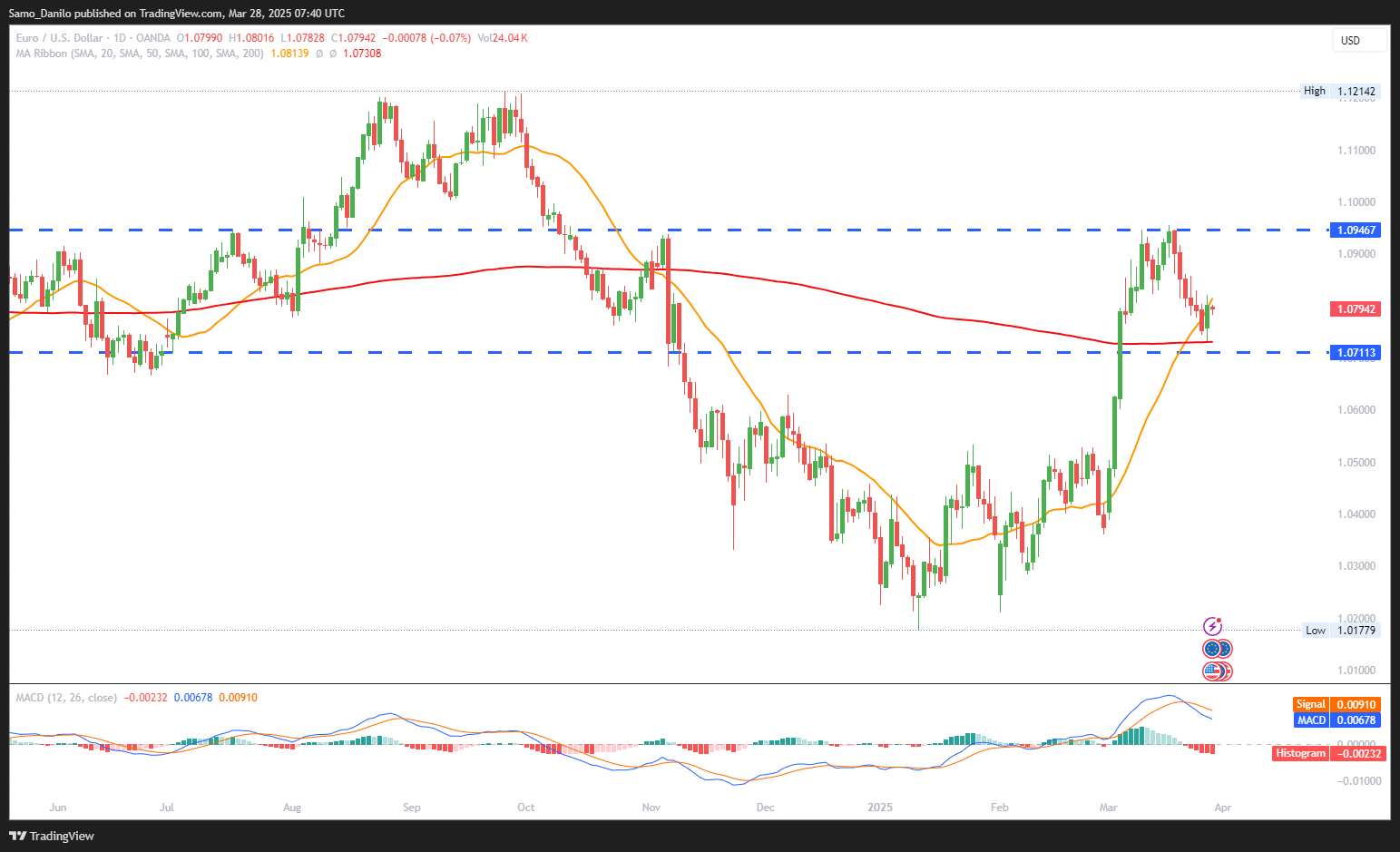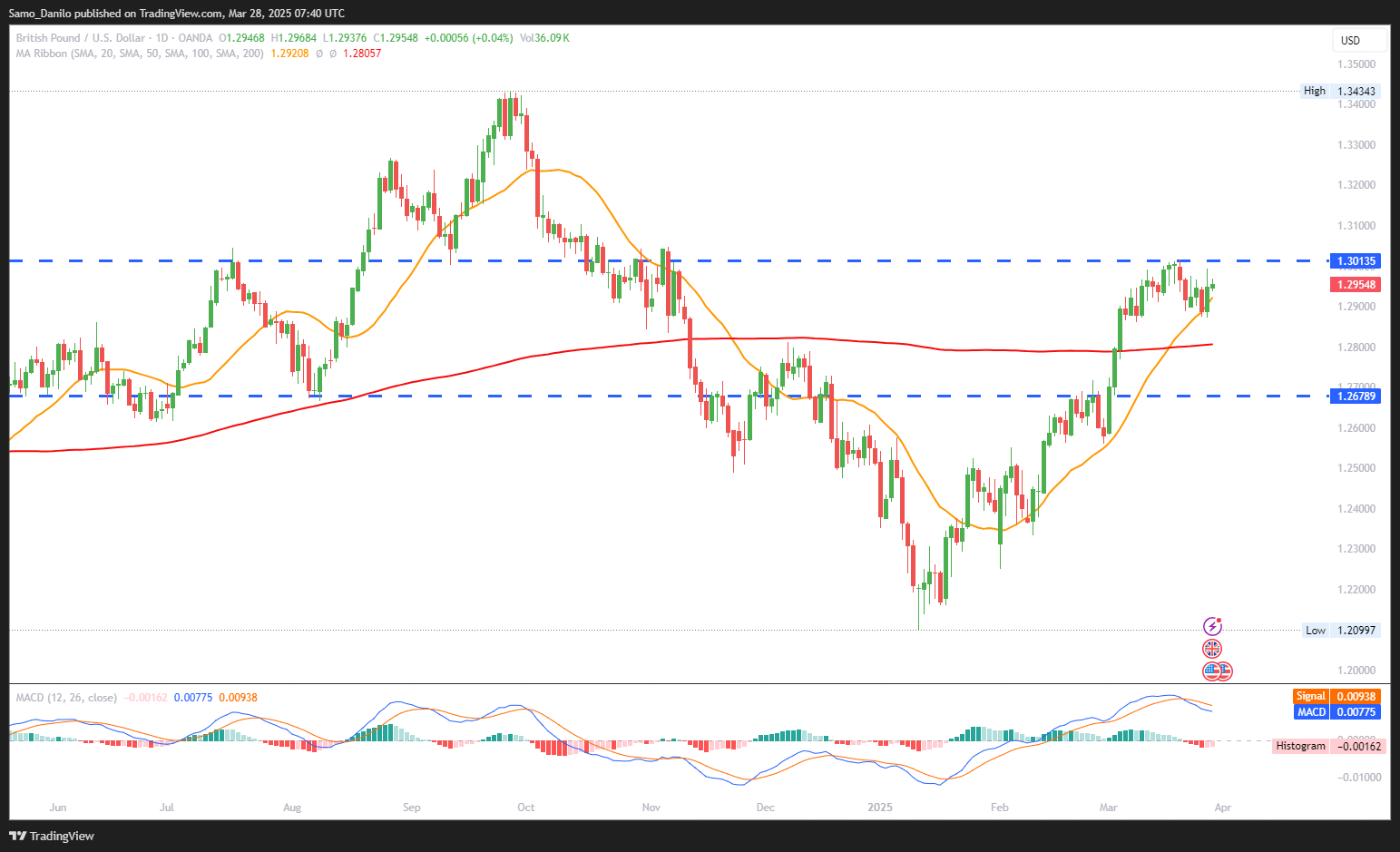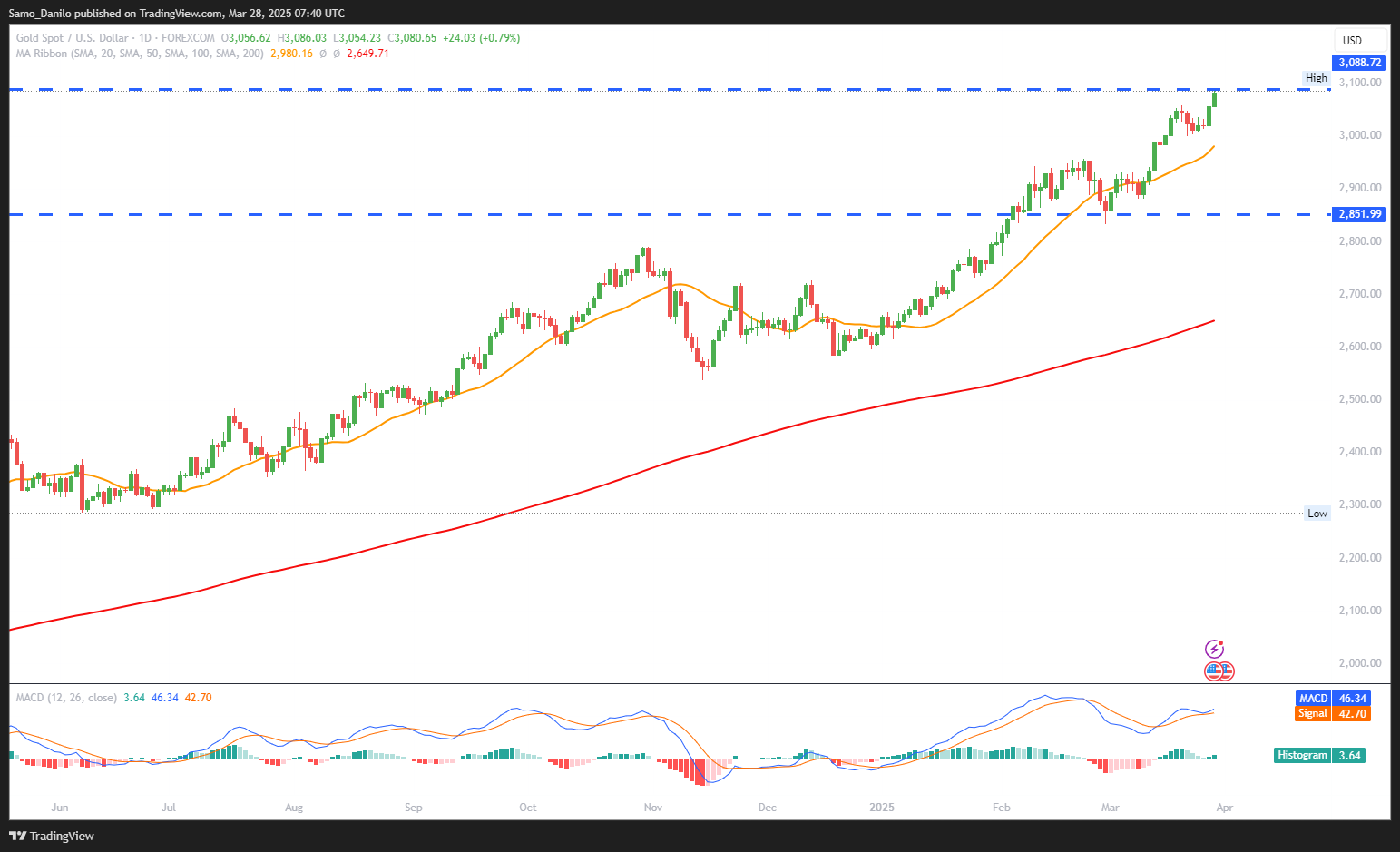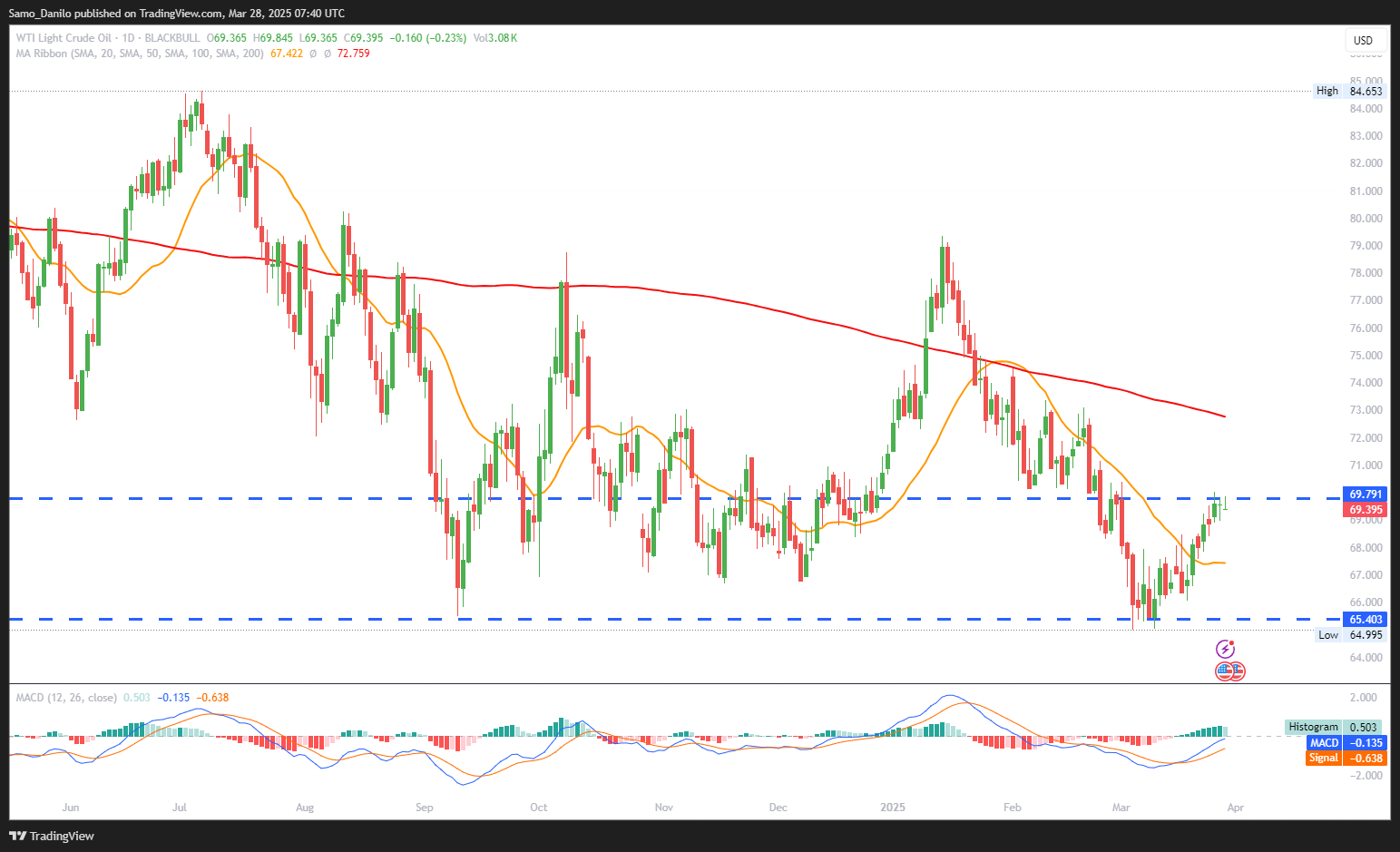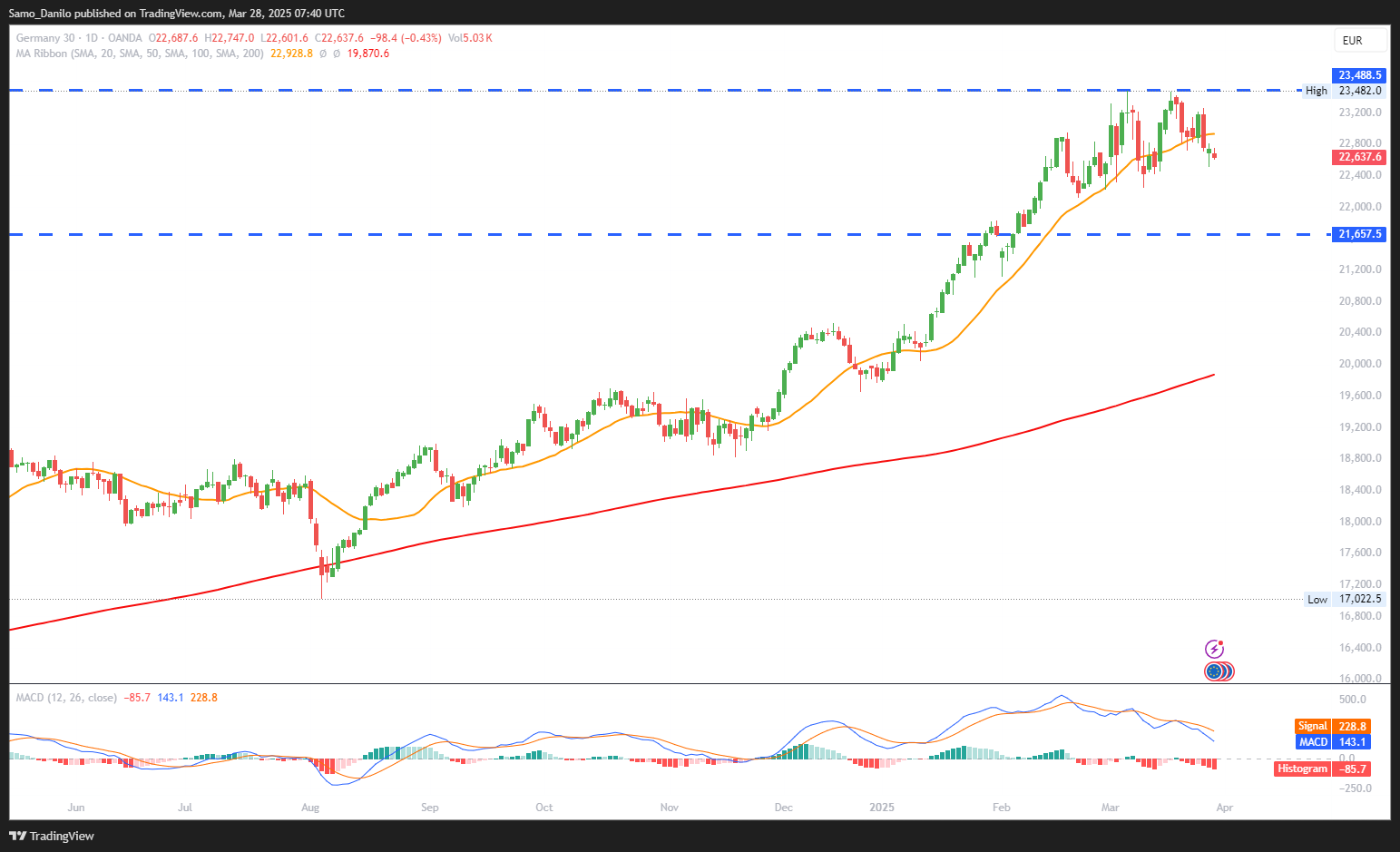EURUSD
- EUR/USD Price: The EUR/USD remains under pressure early Friday, struggling to sustain momentum from Thursday’s rebound as the pair hovers below the key 1.0800 level.
- Retaliatory Tariffs: Trade war fears have intensified after the EU signaled plans to impose retaliatory tariffs in response to Trump’s 25% auto tariffs starting April 2. This heightens trade tensions between the US and the EU.
- Inflation Data: Key inflation data from France and Spain is due today. French inflation has been stable, offering some relief to the ECB, while Spanish core inflation is gradually aligning with the 2% target.
- Trade Concerns: USD strength appears capped as Trump’s aggressive trade policies raise concerns about US economic growth, potentially forcing the Federal Reserve to resume rate cuts sooner than expected.
- PCE Price Index: Investors now await the release of the US Personal Consumption Expenditures (PCE) Price Index on Friday for further clarity on the Fed’s next policy steps.
Closing statement: EUR/USD remains vulnerable to trade war risks and Fed rate cut bets, with market focus on inflation data and the US PCE report for near-term direction.
GBPUSD
- GBP/USD Price: GBP/USD trades with limited movement near 1.2950 during the European session on Friday. The 14-day RSI remains above 50, signaling continued bullish momentum.
- UK Retail Sales: UK Retail Sales rose 1% MoM in February, following a 1.7% increase in January, according to data from the ONS. Annual retail sales growth surged to 2.2% from a revised 0.6% in January, reflecting stronger consumer demand.
- UK Q4 GDP: Final UK Q4 GDP data showed the economy expanded by 0.1% quarter-on-quarter (unchanged from preliminary estimates), indicating modest but stable growth at the end of 2024.
- Core Retail Sales: Core retail sales (excluding fuel) also climbed 2.2% year-on-year in February, up from 0.8% in January, reinforcing the resilience in consumer spending.
- Fed's Collins: Boston Fed President Susan Collins highlighted the Fed’s dilemma between maintaining a restrictive policy stance or easing rates early if signs of economic weakness emerge.
Closing statement: GBP/USD remains supported by strong UK retail data and steady GDP growth, but Fed policy uncertainty and broader market sentiment will dictate near-term moves.
XAUUSD
- XAU/USD Price: Gold (XAU/USD) extends its rally for a second consecutive day, reaching a fresh all-time high near $3,080 in Friday’s European session, supported by strong demand amid market uncertainty.
- US GDP: The US economy grew at an annualized rate of 2.4% in Q4 2024, surpassing the forecast of 2.3%, highlighting resilience despite global economic headwinds.
- Jobless Claims: Initial US jobless claims dropped to 224K from a revised 225K the previous week, signaling a relatively stable labor market and reinforcing economic strength.
- Fed’s Barkin: Richmond Fed President Thomas Barkin warned that uncertainty over the Trump administration’s trade policies could prompt a more cautious approach from the Fed regarding future rate adjustments.
- PCE Inflation Data: Traders are watching the release of the US Personal Consumption Expenditure (PCE) Price Index later in the day for further insights into the Fed’s monetary policy direction.
Closing statement: Gold's upward momentum remains intact, driven by geopolitical uncertainty and strong US economic data. The upcoming PCE report could influence the Fed's next policy steps, impacting gold’s trajectory.
CRUDE OIL
- Crude Oil Price: West Texas Intermediate (WTI) crude oil halted its three-day rally, trading around $69.60 per barrel during Thursday’s European session, as supply and demand concerns balance each other out.
- Oil Imports: India’s Reliance Industries plans to stop importing Venezuelan oil in response to the latest US tariff measures, raising concerns over global supply stability.
- Oil Inventories: The US Energy Information Administration (EIA) reported a 3.34 million barrel drop in crude stockpiles last week, the largest decline since December, alongside a reduction in gasoline inventories.
- Russia-Ukraine Negotiations: US-brokered agreements with Russia and Ukraine could ease some sanctions on Russian oil, increasing supply expectations and putting downward pressure on prices.
- Iraq Plans: Iraq plans to increase its oil production capacity beyond 6 million barrels per day (bpd) by 2029, which could add to future supply pressures.
Closing statement: Oil prices remain in consolidation mode, with supply-side concerns from Venezuela and inventory declines balanced by potential increases from Russia and Iraq. Market focus will remain on geopolitical developments and production trends.
DAX
- DAX Price: The DAX extended losses on Thursday, March 27, falling 0.70% to 22,679 as President Trump's auto tariff announcement triggered a flight to safety and pressured auto stocks.
- Auto Exports: Germany is expected to be significantly affected by the tariffs, as 13% of its total auto exports are sent to the US, raising concerns over trade and economic growth.
- Consumer Sentiment: Germany’s April GfK Consumer Sentiment index fell to -24.5 versus -22.7 expected, suggesting that while pessimism is easing slightly, confidence remains fragile.
- Labor Market: Germany’s unemployment rate is forecast to hold at 6.2% in March, but any rise could increase bets on a more dovish ECB stance, boosting demand for rate-sensitive stocks.
- PCE Data: Markets will watch the US Personal Income and Outlays Report on Friday, March 28. Economists expect the Core PCE Price Index to rise to 2.7% YoY in February from 2.6% in January.
Closing statement: The DAX remains under pressure from auto tariff risks and weak consumer sentiment, while labor market data and US inflation figures will drive sentiment in the near term.
